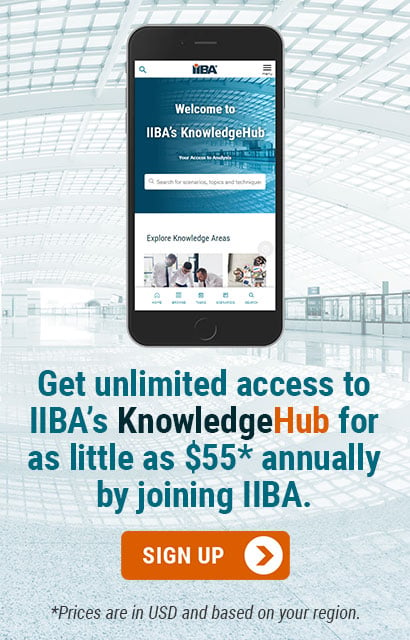
Preface
The Business Analysis Standard
Business analysis has continued to grow and evolve since the 2017 release of the IIBA® Global Business Analysis Core Standard. This has created a need and an opportunity to revisit its content and structure to better serve today’s needs in the business analysis community.
Evolving the Standard
The Business Analysis Standard is the foundation of professional business analysis and summarizes concepts and proven practices as the benchmark for creating business value.
The Business Analysis Standard is aligned with the key principles for standard development described by the International Organization for Standardization (ISO):
- It was co-created with IIBA’s global business analysis community using a multi-stakeholder process.
- Business analysis leaders and professionals were sourced from:
- the business analysis’ global community;
- different organizations representing various industry sectors;
- those who have worked on a variety of initiatives.
- Multiple review cycles were used to ensure global expert opinion was incorporated, and this feedback was included to ensure a worldwide representation.
- A consensus-based approach was followed.
The Business Analysis Standard provides the direction for the future of the Guide to the Business Analysis Body of Knowledge®. It gives a comprehensive view of the foundation for effective business analysis. It will be updated regularly to align with evolving business analysis community needs.
Summary of Changes
The Business Analysis Standard is an update to and replaces the Global Business Analysis Core Standard.
It provides:
- a simplified, comprehensive view of business analysis;
- summarized foundational information;
- information about the mindset required to focus on value creation;
- integration of agile business analysis to address hybrid approaches;
- addition of:
- key competencies that are critical for effective analysis;
- key techniques that are fundamental to performing good analysis;
- “design” with requirement tasks and activities as appropriate;
- managing the delivery of business analysis;
- sustainability as a requirement classification; and
- key terms of reference;
- incorporation of:
- the Business Analysis Core Concept Model™ (BACCM™) to support the work to be done; and
- other knowledge products that help describe business analysis work;
- removal of numbering so there isn’t an implied sequence for tasks.
What Didn’t Change
The six knowledge areas and the thirty business analysis task descriptions have not been changed. Anyone studying for certifications should reference the BABOK® Guide and the appropriate Certification Guides for detailed information.
How to Gain the Most from The Business Analysis Standard
The Business Analysis Standard identifies the foundation of good business analysis. It is meant to be a summarized representation of concepts and practices that are essential to creating good business outcomes.
It is best used as a starting point to our detailed knowledge sources, which illustrate usage with examples (see embedded links in the Standard).
The business analysis community uses The Business Analysis Standard as:
- the foundation for understanding business analysis work;
- a mentoring tool for people new to business analysis and new to an initiative;
- an education tool for stakeholders who may not understand the depth and breadth of business analysis work;
- a simplified, comprehensive view of business analysis;
- a pathway to our future integrated knowledge sources;
- an easy-to-use view of business analysis tasks.





















